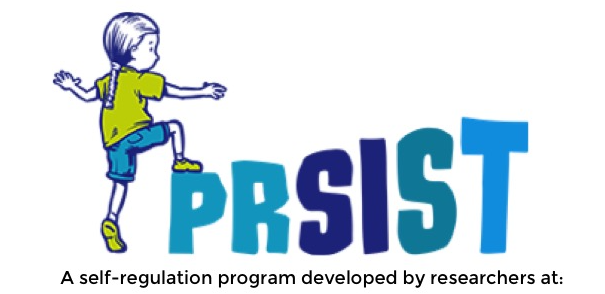
PRSIST Yoga
What to do: At regular intervals in the week, engage children in yoga to direct their attention and focus to calming and controlled poses. With each pose, ask children how the pose makes them feel, and which they might be able to use when they want to feel more flexible, calm, determined, or focused.
- Focused – hands as blinders on sides of face, sitting cross-legged
- Calm – sitting on knees, laying forward with arms outstretched
- Strong – legs shoulder width apart, two arms flexed
- Flexible – downward dog
- Engaged – superman pose
- Powerful – warrior pose (front foot lunge, arms stretched forward and back, looking forward)
- Thinking – feet in second position, index fingers on temples
- Effort – starting block position, but back leg stretched out
- Thoughtful – two person pose: right foot touching in centre, two hands pressed against each other’s
- Determined – two fists held straight outward, straight legs in a V
- Sharing – two cupped hands, sitting cross-legged
- Recovery – lay on your back, arms to your sides, looking up to the ceiling
Ideal formation(s): Small group, until children are familiar with the poses and links to feelings.
What it does: This activity challenges children’s ability to identify their emotions and think about how they can regulate their own emotions.
Links to EYLF:
- Demonstrate an increasing capacity for self-regulation; Be open to new challenges and discoveries; Persist when faced with challenges and when first attempts are not successful (from Outcome 1.2)
- Enjoy moments of solitude (from Outcome 3.1)
- Engage in increasingly complex sensory-motor skills and movement patterns; Combine gross and fine motor movement and balance to achieve increasingly complex patterns of activity including dance, creative movement and drama (from Outcome 3.2)
- Persist even when they find a task difficult (from Outcome 4.1)




